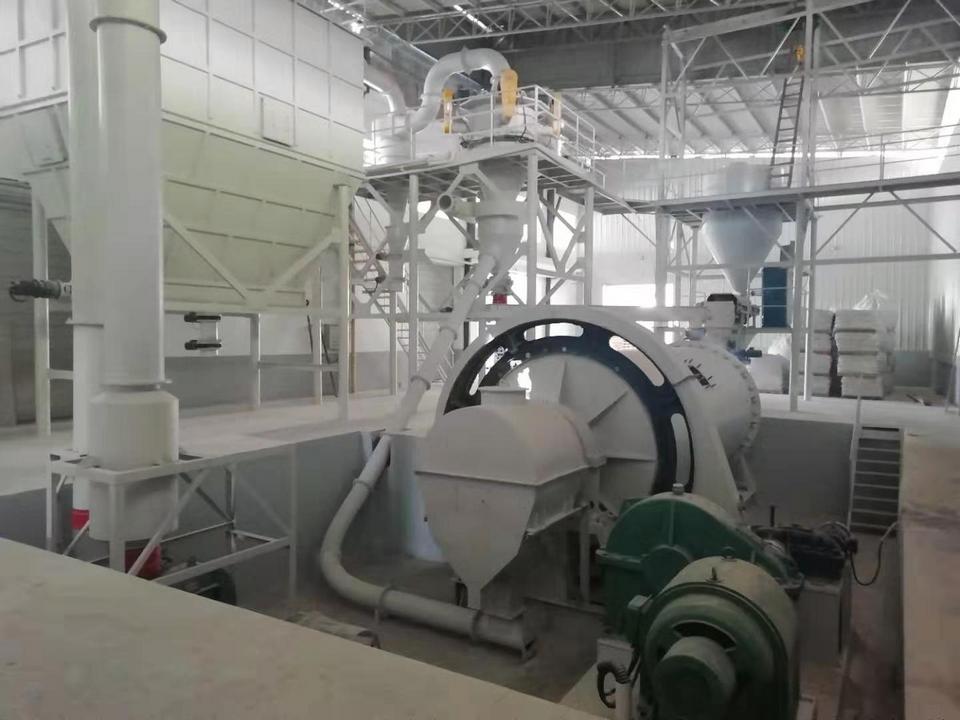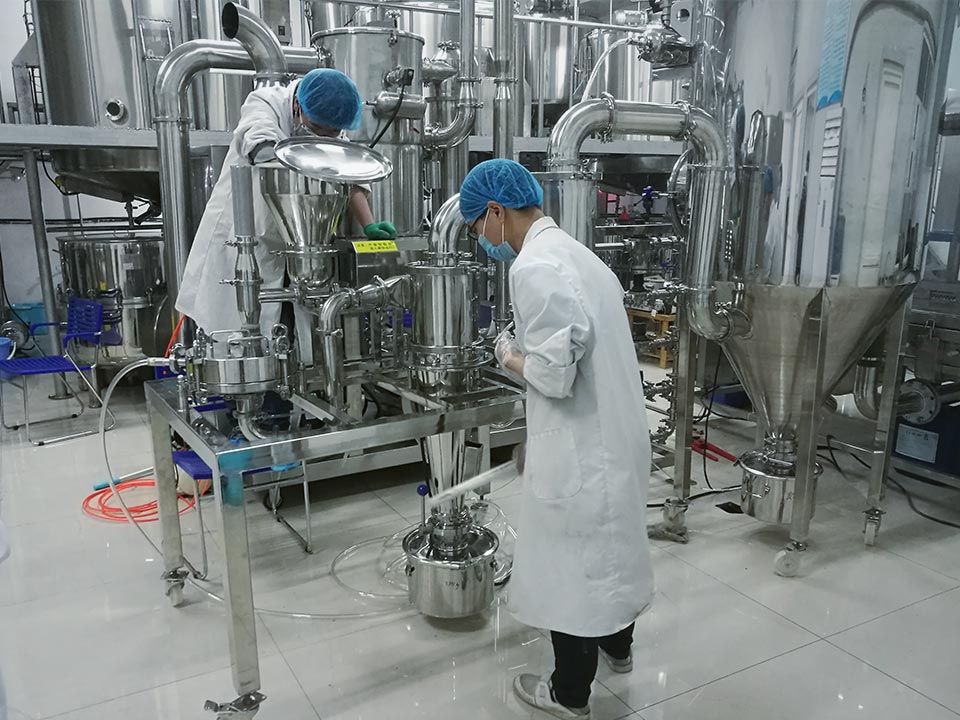Influencing factors of jet mills used in the battery material industry
Using jet mill processing, the average particle size of materials can reach 1-45 microns, and the particle size range can be adjusted arbitrarily. It is an indispensable processing equipment in the battery material industry. So the question is, to what extent can the jet mill grind? It is related to the following factors:
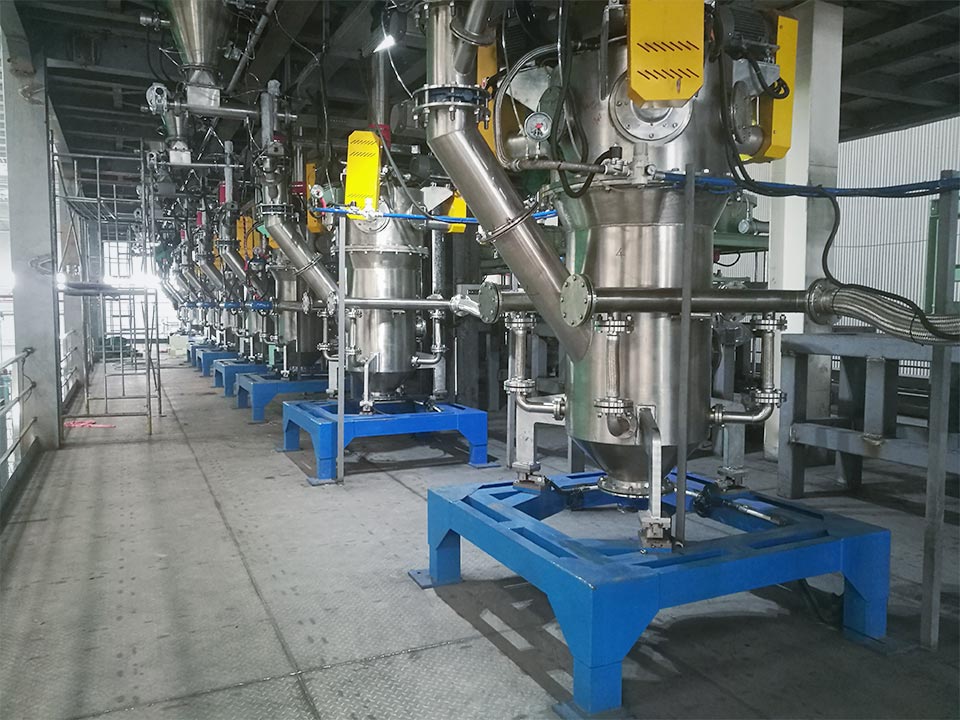
1. For the initial fineness of raw materials, the jet mill generally requires the feed to be below 50 mesh.
2. It is related to the physical properties of the material, the fluidity in the material, and the uniformity of the particles. Some materials have poor fluidity, many impurities, and high solvent content. There may be material blocking during the production process. At this time, special equipment is needed to do this. Not all materials can be ground with standard equipment to achieve the fineness of grinding. .
3. It is related to the grinding pressure in the grinding process. The feed pressure of some equipment is greater than the grinding pressure, and the grinding pressure of some equipment is greater than the feed pressure. Specific materials need to be specifically designed.
4. It is related to the feeding speed. Not all materials have good fluidity. Whether it is screw feeding or vibrating feeding, the feeding process is a very important factor. Some very fine materials are difficult to feed. , At this time, it is necessary to use a dedicated and personalized configuration to achieve the feeding effect.
5. It is related to the degree of optimization of the jet mill. There are many manufacturers of jet mills, but the fineness of the same material produced by different manufacturers is different, even if it is made by different models of equipment from the same manufacturer. There are also differences. However, based on experience, the effect of a larger grinding disc is better than a smaller one.
6. It is related to the operation method of the operator's proficiency. Some equipment requires a small and then large pressure operation to start up, and some are directly operated in one step.
It can be seen from the above that the fineness of the jet mill is not fixed, but adjustable. It is for this reason that it has become a favored processing equipment in various industries, which can meet the diverse needs of different users.
Jet mill completes ultrafine grinding and classification at the same time
The jet mill is a mill that integrates the dual functions of grinding and jet classification. It is developed to meet the market's demand for high-end mills. The jet mill is equipped with a sorting chamber to sort the particles in the high-speed swirling flow. The fine powder that has lost the centrifugal force is introduced into the collection system to become a finished product, and the coarse particles sink to the grinding cavity along the outside of the swirling flow under the action of centrifugal force, making it Was ground again. The material of the mobile jet mill is conveyed from the check valve to the storage hopper, and sent to the grinding chamber through the screw feeder. The supersonic air enters the grinding chamber through several spray nozzles, and is sprayed to the center to fluidize the material and be ground. The material is crushed under extremely strong impact. This machine is a vertical-shaft reflective pulverizer, which can complete the two processing steps of micro-grinding and particle sorting at the same time. It is suitable for processing a variety of materials in various industries. The particle size can be adjusted arbitrarily without stopping the machine.
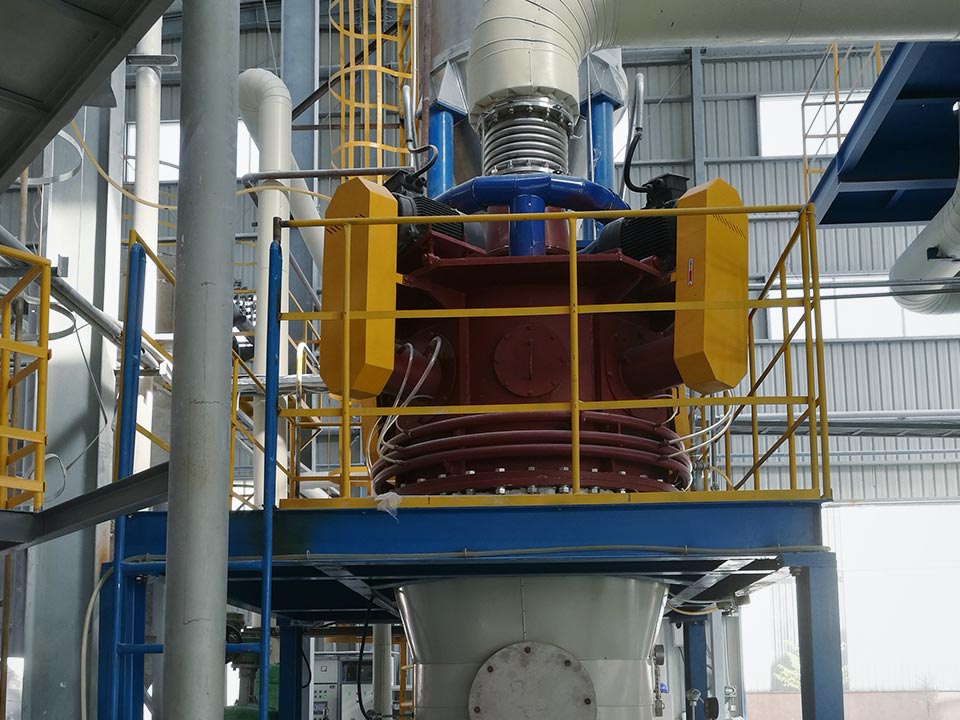
The jet mill is mainly composed of frame, upper box, middle box, lower box, feeding device, grading motor, main motor, rotor assembly and other components. The rotation of the rotor is obtained by the main motor driving the main shaft through the V-belt. The rotation of the grading wheel is achieved by the grading variable frequency motor driving the grading shaft through the coupling. The rotation of the classifier is opposite to that of the grinding disc. The elasticity of the V-belt is adjusted by the tightening bolts to adjust the center distance between the motor and the host, so that the V-belt is moderately tight. The rotor is mainly composed of a main shaft, a bearing seat, a bearing, a rotor, a grinding block, and a V-belt wheel. After the rotor is installed with grinding blocks, the dynamic balance is checked. The rotating speed of the grading impeller can be adjusted freely without stopping the machine, so that the graded product can reach the ideal fineness. The feeding device is mainly composed of hopper, auger, frequency conversion motor, reduction box and other parts. The amount of feed can be obtained by adjusting the speed of the frequency conversion motor, so that the load of the main motor is basically within the rated load range.
Since the rotor assembly and the grading impeller can be assembled after passing the dynamic balance verification, the vibration generated during operation is very small. The whole machine does not need foundation and foundation bolts to install. The rack only needs to be placed on a horizontal ground or supported by shock-proof pads. The position of the electric control cabinet and the host should not be too far away (except in special circumstances, such as grinding conductive materials, etc.). In this way, the load of the main motor can be observed, and the power supply can be cut off in time in case of danger.
The jet mill is used for ultrafine grinding in chemical, food, feed, medicine and intermediates, tobacco, pesticides (wettable powders), pigments, coatings, dyes, ceramics, pigments, colloids, non-metallic minerals and bioengineering industries (Such as calcium carbonate, magnesium oxide, aluminum hydroxide, cerium oxide, phenolic resin, α-starch, pentasodium, mica, etc.).
How does the grinder ensure the aseptic production of APIs?
At present, the raw material drug market is showing the following major phenomena. First, some vitamins have entered a new price increase cycle; second, amino acids have jumped up and are still out of stock; third, the price of trace elements has doubled; fourth, raw materials Monopoly has also reached an outrageous degree. In addition to these, due to the frequent occurrence of drug safety incidents and the increasing attention of drug regulatory authorities to the production of sterile drugs, sterile APIs have become the focus of attention in the pharmaceutical industry.
Sterile APIs usually combine the refining process of the product with the aseptic process as a one-step operation unit in the production process. In the production process of aseptic raw materials, all links must be strictly controlled, especially equipment control. Among them, crushing equipment is widely used.
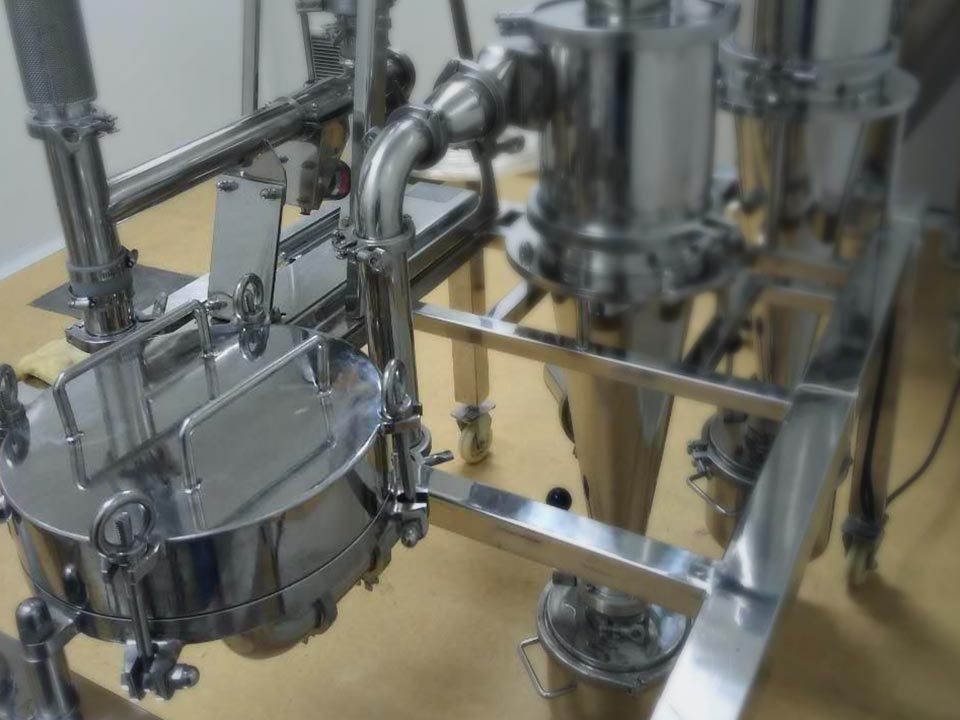
The pulverizer is a device that uses the high-speed relative movement between the movable toothed disk and the fixed toothed disk to crush the materials through the combined effects of the toothed disk impact, friction, and the impact between the materials. Generally speaking, the pulverizer can process hard and difficult to pulverize materials, such as the pulverization of Chinese herbal medicines, rubber, etc., and can also be used as a supporting equipment for the pre-processing procedures of the micro pulverizer and ultrafine pulverizer.
In the application of sterile APIs, some experts pointed out that pharmaceutical companies should use grinders with caution. Generally, it is recommended to use crushing and granulating machines, jet mills or others that can meet the corresponding process requirements and GMP specifications in the production of sterile APIs. The equipment, while examining its manufacturing quality and structure. There are two reasons why it is pointed out that it should be used with caution.
On the one hand, the pulverizer is not consistent with the production process of sterile APIs. In the process of material pulverization, it is easy to produce insoluble impurities and metal particle pollution, can not solve the problem of heat sensitivity, and it is difficult to ensure thorough and reliable cleaning or achieve the elimination. Bacteria requirements. On the other hand, as the aseptic production process usually has more variable factors than the final sterilization process, such as the air cleanliness, temperature and humidity of the production environment, and the operating habits of the staff, it increases the difficulty of its production. In addition, the sterilization of sterile APIs is special, and it is necessary to ensure that there is no heat source, and the sterilization process should be reliable and not be perfunctory. Therefore, special attention should be paid to the cleaning and sterilization of the pulverizer.
The cleaning method of the equipment is exquisite. First, remove the outer cover, flap teeth, sieve, and material hopper, remove the special powder receiving bag, move the powder receiving bag to the laundry room, and clean it according to the regulations. Secondly, the outer cover, flapping teeth, sieves, and material bucket should be moved to the ware washing room, soaked in 75% ethanol for 5 minutes in a stainless steel bucket, then brushed with a brush, and rinsed with purified water until clear.
After cleaning, it is the process of wiping dry. At this time, use a special rag for the inner surface of the equipment and a special rag for the outer surface of the equipment to wipe the inner and outer walls of the equipment until they are wet. Then use a brush dipped in 75% ethanol to scrub the inner and outer walls of the equipment, rinse with purified water until it is clear, dry the inner surface with a special cloth for the inner surface of the equipment, and dry the outer surface with a special cloth for the outer surface of the equipment. Then wipe the parts contacting the materials with 75% ethanol and let them dry naturally. After all the procedures are completed, put back the outer cover, flap the teeth, the sieve, and the material hopper.
In terms of sterilization, one of the most important aspects of using equipment in a sterile environment is the sterilization after cleaning. The usual sterilization methods include moist heat, dry heat, filtration, radiation, and ethylene oxide sterilization, among which the more effective methods are moist heat and dry heat sterilization. The pulverizer is a device directly in contact with the sterile API. The sterilization of it is usually performed on-line with steam, and then the environment and the appearance of the device are sterilized together with the formalin spray method.
Regarding the application of pulverizers in the production of sterile APIs, pharmaceutical companies should consider various factors, including equipment characteristics, process routes, and GMP as consideration factors. In addition, for equipment companies, it is necessary to strengthen technological innovation, develop a pulverizer that can be used in the production of aseptic raw materials as soon as possible, and constantly improve and improve the performance of the pulverizer in the production of aseptic raw materials.
It is very important to master the operation process of the jet mill
Mastering the operation of the jet mill is very important to the jet mill itself, but many people are not very clear about the procedures of how to operate the jet mill safely, so we need to learn and understand.
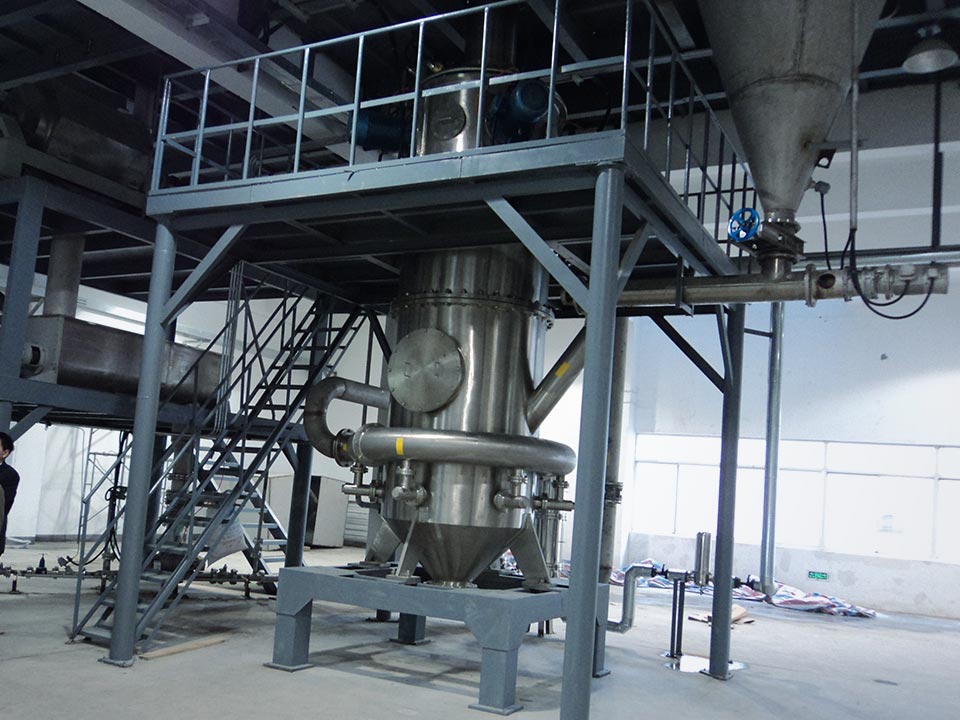
All circuits and electrical components of the jet mill should be checked to see if they can work normally. Whether the machine has been grounded, so as to avoid the risk of electric shock when the cabinet is electrified. Whether the machine spindle is stuck, if any, it should be dealt with in time. During the operation of the machine, whether there is any abnormality, stop and check immediately if any. Check whether the blade is tight and whether the blade gap can meet the specified standards. Before using the pulverizer, check whether there are sundries or sundries in the working room, and remove them in time.
Feeding can be started only after the crusher is operating normally. Before shutting down the crusher, stop feeding. Wait until the machine is completely discharged before stopping. Feeding should be even, not excessive, so as not to increase the burden on the machine. During the operation of the jet mill, cleaning, maintenance, etc. cannot be carried out.
The main reasons for the high oil temperature of the lubrication system are: (1) Abnormal wear on the surface of the friction disc or the oil groove; (2) The quality of the lubricating oil does not meet the requirements; (3) The cooling system does not play a cooling role; (4) Lubricating oil The flow is low.
The hydraulic cone crusher oil temperature protection range of the crusher is 21-54℃, beyond this temperature range, the main motor is tripped and powered off under the control of the oil temperature gauge. In summer, the temperature is high. Due to the heavy load, the oil temperature of the two crushed cone crushers is relatively high. After driving for a period of time, the oil temperature will approach or exceed 54°C. In order to protect the equipment, only manual shutdown or automatic tripping is required. After each trip, the internal friction surface needs to be cooled to a certain temperature before driving again. This results in multiple stops in a shift, which seriously restricts the production capacity of cone crushers and affects The improvement of the system efficiency, therefore, the transformation of the cooling system is imperative.
Through analysis and transformation, it can be achieved: reducing frequent opening and stopping caused by excessive oil temperature, and improving the production capacity and system efficiency of the cone crusher.
Cause analysis Due to the high temperature in summer and heavy load of cone crushing, the oil temperature of the lubrication system is too high, and the critical value of the oil temperature gauge tripping and power failure that often reaches or exceeds 54 ℃. This causes the system to start and stop repeatedly in a shift, which severely restricts The normal production capacity of cone crusher affects the improvement of system efficiency.
Application & market of titanium dioxide
Titanium dioxide is a white powdery solid obtained from titanium ore through the sulfuric acid method or the chlorination method. It is considered to be a white pigment with good performance in the world. Titanium dioxide refers to the titanium dioxide whose surface has been treated with inorganic or organic to overcome the original application defects of titanium dioxide. It has the best opacity, best whiteness, gloss, excellent weather resistance, hiding power, dispersibility and other weak, chemical Performance, widely used in industrial fields such as coatings, plastics, paper, rubber and ink, and food fields.
Titanium dioxide is divided into pigment grade and non-pigment grade according to its use. Pigment-grade titanium dioxide is mainly used for white pigments. According to the crystal state, it can be further divided into anatase titanium dioxide (A type) and rutile titanium dioxide (R type). Among them, rutile titanium dioxide has better chemical stability. It is mainly used for high-grade outdoor coatings, light latex coatings, high-grade paper and rubber materials.
Anatase titanium dioxide has the advantages of high whiteness, high refractive index, large difference in refractive index from fiber-forming polymers, non-toxic and harmless, low production cost and wide raw material sources. It can be used as an additive in the production of matting cotton fiber Is applied.
Non-pigment grade titanium dioxide has purity as its main purpose. It is divided into enamel grade, ceramic grade, electric welding grade and electronic grade. Its high temperature resistance and optical properties play a major role.
The sulfuric acid method is the world's earliest industrialized production method of titanium dioxide. The process mainly includes the following aspects: pulverization and acid hydrolysis of titanium ore materials, separation and purification of TiOSO4, hydrolysis of TiOSO4 to form insoluble metatitanic acid, washing, bleaching, Calcining and crushing, surface treatment, etc.
Advantages: The sulfuric acid method can be used to produce two kinds of rutile and anatase titanium dioxide. The process technology is mature, the equipment is simple, the raw material requirements are low, and the price is cheap and abundant.
Disadvantages: The consumption of raw materials is large, the utilization rate is low, the by-products are large, the environmental pollution is serious, and the process is complicated. With the continuous innovation of technology, this production method is constantly being eliminated by enterprises.
The chlorination method is currently a widely used method for producing titanium dioxide in industrial production. The emergence of the chlorination method can not only produce high-quality titanium dioxide, but also solve the problem of the long process flow of the sulfuric acid method, reduce the emissions of the three industrial wastes, and be beneficial to environmental protection. At the same time, this method is easy to realize automated production, which is in line with the requirements of modern enterprises. Production requirements.
Application of Titanium Dioxide
Coatings, papermaking and plastics are the three main application areas of titanium dioxide. Other application areas include ink, chemical fiber, cosmetics, rubber, food industry and medicine. The use of titanium dioxide for non-pigment is mainly in the fields of enamel, ceramics, capacitors, welding rods, catalysts, and the field of nano-titanium dioxide that requires optical properties of titanium dioxide but does not require its covering properties.
- Coating
At present, coatings are the largest application field of titanium dioxide. The TiO2 consumed by the coatings industry accounts for 58% to 60% of the total consumption of titanium dioxide pigments. Titanium dioxide is also the most used pigment in the coating industry, accounting for about half of the cost of coating colorants, and 10% to 25% of the cost of coating raw materials. As a kind of chemical advanced material product, coating has been greatly developed in recent years, and the total output of the industry reached 17.598 million tons in 2018.

- Plastic
Plastics are currently the second largest user of titanium dioxide pigments, accounting for 18% to 20% of the world's total demand for titanium dioxide. The amount of titanium dioxide added to the plastic will vary with its varieties and applications, generally between 0.5% and 5%. At present, the annual output of plastic products is more than 60 million tons, and the consumption of titanium dioxide is about 600,000 tons. Titanium dioxide has excellent weather resistance, hiding power, dispersibility and other physical and chemical properties, which greatly meets and adapts to the production standard requirements of plastic industrial products for titanium dioxide performance and quality.

- Papermaking
The paper industry accounts for 11% of the total consumption of titanium dioxide. The application of titanium dioxide in the paper industry is very similar to that of the plastics production industry. Both are used as basic pigments. In the paper industry, titanium dioxide can also be used as a filler. It is used to improve the optical properties of paper to better enhance its opacity, including improving its brightness, whiteness, smoothness, uniformity, etc.

Performance comparison of different types of titanium dioxide in the field of papermaking
| Paper Classification | Rutile | Anatase | Remark |
| Decorative paper | √ | High anti-aging requirements | |
| High ash paper | √ | The hiding power of anatase titanium dioxide does not meet the requirements | |
| Low ash paper | √ | Good opacity required | |
| Coinage paper | √ | Good opacity required |
- Ink
The whiteness quality of titanium dioxide is guaranteed, the water resistance is strong, the hiding power is large, and the weather resistance, heat resistance and chemical properties are very stable. In the ink industry, titanium dioxide is a necessary production material. Titanium dioxide in the ink not only has the function of improving gloss and aesthetics, but also can improve the properties of the ink.
- Masterbatch
Color masterbatch is developed in modern times and is used in coloring products of plastics and other systems. Its principle is to load an excess amount of pigment in resin to prepare a polymer compound for coloring. The main components include: resin, pigment, dispersant, etc. The core of the development of color masterbatch technology is the compatibility of pigments, dispersants and resins. The goal is to increase the pigment content and coloring effect in the color masterbatch. The key is to improve the dispersion of the pigment in the color masterbatch. Titanium dioxide is widely used in industries such as color masterbatch, especially in some high-end color masterbatch industries, it is one of the necessary coloring raw materials.
- Chemical fiber
The chemical fiber industry (especially anatase) is another important application field of titanium dioxide. Since the molecules in the chemical fiber industry are neatly arranged, the fiber surface is smooth, has a dazzling luster, and is translucent, so it is necessary to add a matting agent before spinning. Titanium dioxide is the most ideal matting material in the synthetic fiber industry.
- Denitration catalyst
Denitration catalyst generally refers to the catalyst used in the SCR denitration system of power plants. In the SCR reaction, the reducing agent will selectively react with the nitrogen oxides in the flue gas at a certain temperature.
From a global perspective, the global effective production capacity of titanium dioxide is about 7.2 million tons, and CR10 (the company with the top 10 effective production capacity) accounts for 65%, mainly in North America, Western Europe, and Japan.
Article source: China Powder Network
Surface modification of nano calcium carbonate
Nano calcium carbonate is a new type of ultrafine solid powder material developed in the 1980s, and its particle size is between 0.01 and 0.1 μm. It is precisely due to the ultra-fineness of nano calcium carbonate particles that have produced characteristics that ordinary calcium carbonate does not have, so nano calcium carbonate is widely used in various fields.
Nano calcium carbonate has a 50-year history of development and is widely used in various fields.
| Nano calcium carbonate | Purpose | Performance improvement |
| Plastic | Good compatibility with resin, improve the rheological properties of products, etc. | |
| Papermaking | Improve the bulk density, apparent fineness and water absorption of paper. | |
| Rubber | Reinforce, fill, color, improve the processing technology and product performance. | |
| Paint | Improves the thixotropy of the blue system, the adhesion of the high-choice paint, the scrubbing resistance, and the stain resistance. | |
| Other | In the feed industry, it can be used as a calcium supplement to increase the calcium content of feed. |
Because nano calcium carbonate has the characteristics of large surface energy, low dispersibility and hydrophilic surface, it is incompletely dispersed in organic media, and nano calcium carbonate cannot be directly used in organic media.
The purpose of nano-calcium carbonate modification is to reduce the cohesion between particles and improve its dispersibility; improve surface activity; improve compatibility with other substances; improve acid resistance; prepare nano-calcium carbonate with specific crystal shapes for use in different industries.
The modification methods of nano-calcium carbonate usually mainly adopt grafting and coupling reactions, that is, connecting certain organic groups (such as carboxyl groups, etc.), coupling agents, surfactants, etc. on the surface of nano-calcium carbonate. Commonly used modifiers include surfactants, polymers, and coupling agents.
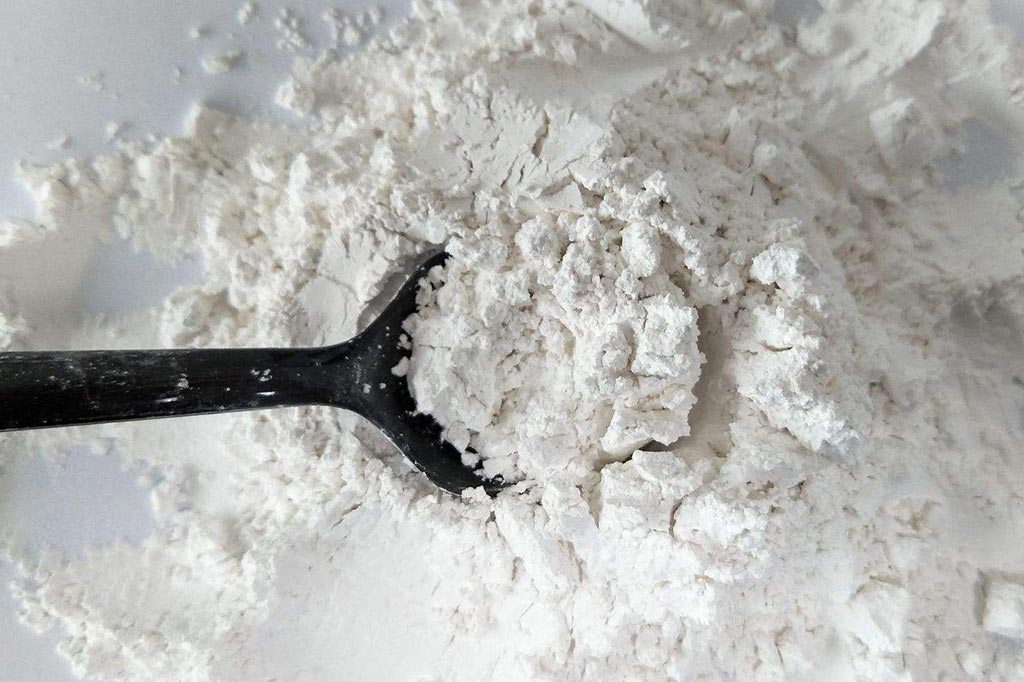
Surfactant
The surfactant chemically adsorbs or reacts on the surface of the calcium carbonate particles to form a layer of lipophilic structure, which has good compatibility with fillers and resins, and greatly reduces the viscosity of the polymer. Commonly used surfactants are fatty acids (salts), resin acids, lignin, and anionic/cationic surfactants.
Polymer
The polymer modifies the surface of the nano calcium carbonate, which can coat the surface of the nano calcium carbonate to form a complete and dense coating layer, improve dispersibility and increase acid resistance. Commonly used polymers include acrylic acid, salts, and terpolymers.
Coupling agent
Part of the groups in the coupling agent molecules react with functional groups to form strong chemical bonds, and the other part of the groups can undergo chemical reactions or physical entanglement. With the help of the monolayer of "bridging", the minerals and organisms can be combined. The very different materials are firmly combined. Commonly used coupling agents are classified into organosilicon series, titanium series, aluminum series, chromium series, etc. according to their core elements. The most commonly used coupling agents are titanate coupling agents and organosilanes.
Surface modification method
- Local chemical reaction modification method
The local chemical reaction modification method mainly uses the chemical reaction between the functional groups on the surface of the nano-calcium carbonate and the treatment agent to achieve the purpose of modification. The specific process is divided into two types: dry method and wet method.
The dry method is to put nano calcium carbonate powder into the modifier, and then put in the surface modifier for surface treatment after running. Dry modification is simple and easy, direct packaging, easy to transport, but the obtained powder is not uniform, suitable for coupling agents such as titanate.
Wet modification is to directly add the modifier to the nano-calcium carbonate solution for surface modification treatment. The modification effect of wet modification is good, but the process is complicated and the transportation is inconvenient, so it is suitable for water-soluble surfactants.
- High-energy modification method
The high-energy modification method is a method for surface treatment of fillers by means of plasma or irradiation treatment. The technology is complicated, costly, low production capacity, and unstable modification effect, so it is less used in industry.
- Mechanochemical method
The mechanochemical method is more effective for calcium carbonate with large particles. It can increase the active points and active groups on the surface of nanometer calcium carbonate, and enhance the effect of organic surface modifiers.
From the development trend in recent years, we make a simple prediction on the market trend of nano calcium carbonate in the future: from the situation in the past few years, nano calcium carbonate has been showing a growing trend, and in the future, it will be at a rate of 20%. Continued growth. The scale of the market will also continue to expand, and the hidden potential of the market will continue to be explored.
Article source: China Powder Network
What are the reasons for the vibration of the ball mill?
For the production line of the aerated concrete industry, the ball mill is an indispensable equipment in the grinding production line. However, during the production process, the transmission system sometimes vibrates greatly. So what are the reasons for the vibration of the ball mill?
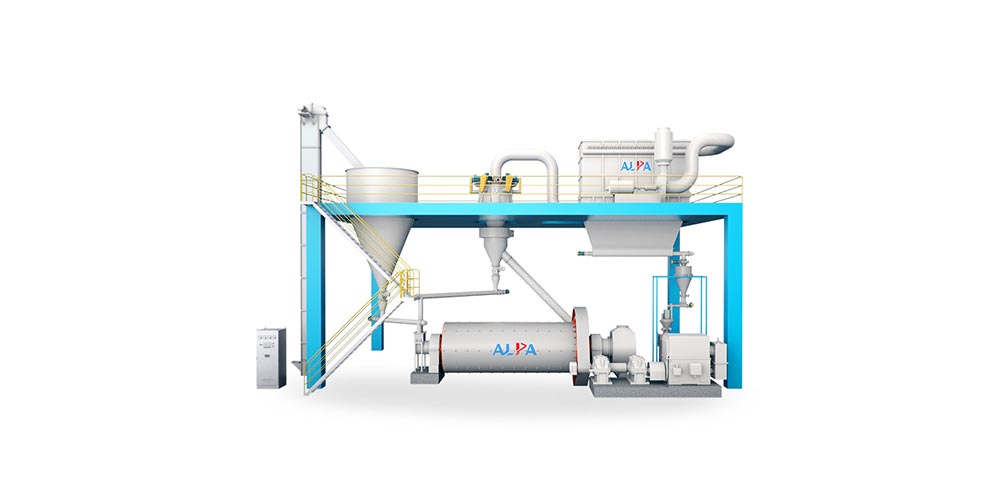
- The teeth of the gear will enter the mud during operation, resulting in poor lubrication
The ball mill is an open gear transmission device, equipped with gears and inner and outer covers, but the sealing performance is still poor. When the bushing bolts near the large gear ring are loose, the leaked mud easily enters the gear meshing surface, destroys the lubricating oil film on the tooth surface, and generates great impact noise and transmission system vibration.
- Wear of pinion bearings
There is a double row spherical roller bearing on both sides of the pinion bearing. After a period of use, the bearing parts wear out, the gap between the inner ring, the outer ring and the roller increases, and radial runout occurs when the pinion shaft rotates, which will cause the gear tip clearance to change continuously. It is prone to shock, vibration and noise, and the surface wear of gear teeth is aggravated.
- The tooth surface of the mill gear is severely worn
After the ball mill has been running for a long period of time, the upper tooth surface of the pinion gear is first ground from the concave platform, and the tooth side clearance increases. When the ball mill is running, impact vibration occurs, and a great impact sound is generated, and the wear between the tooth surfaces is aggravated.
- Vibration caused by the displacement of the transmission parts
After the ball mill works for a long time, the anchor bolts of the motor, reducer and pinion bearing seat in the transmission part will sometimes loosen, and the transmission part will move, so that the axis is not in the same straight line, and vibration occurs. The transmission system of the ball mill should be stopped for testing, and then the transmission system should be re-aligned.
- Wear of the nylon pin of the coupling
After the nylon pin works for a certain period of time, the surface of the cylinder will wear and the diameter will become smaller, which will cause shock and vibration of the coupling half. At this time, the nylon pin should be replaced in time to avoid damage to the coupling.
- Motor speed is unstable due to short circuit between turns
During operation, the motor current is unstable, and at the same time, the large and small gears' damage current fluctuations will cause large periodic vibrations.
What are the reasons for the decline in ball mill output?
The beneficiation stage is mainly divided into three stages: pre-selection, separation and post-selection. Grinding is in the pre-selection stage. Therefore, the output of the ball mill has a certain degree of influence on the mineral separation effect, and even the recovery rate and concentrate grade. Therefore, how to ensure the output of the ball mill has become a topic of concern, so what are the reasons that affect the output of the ball mill?
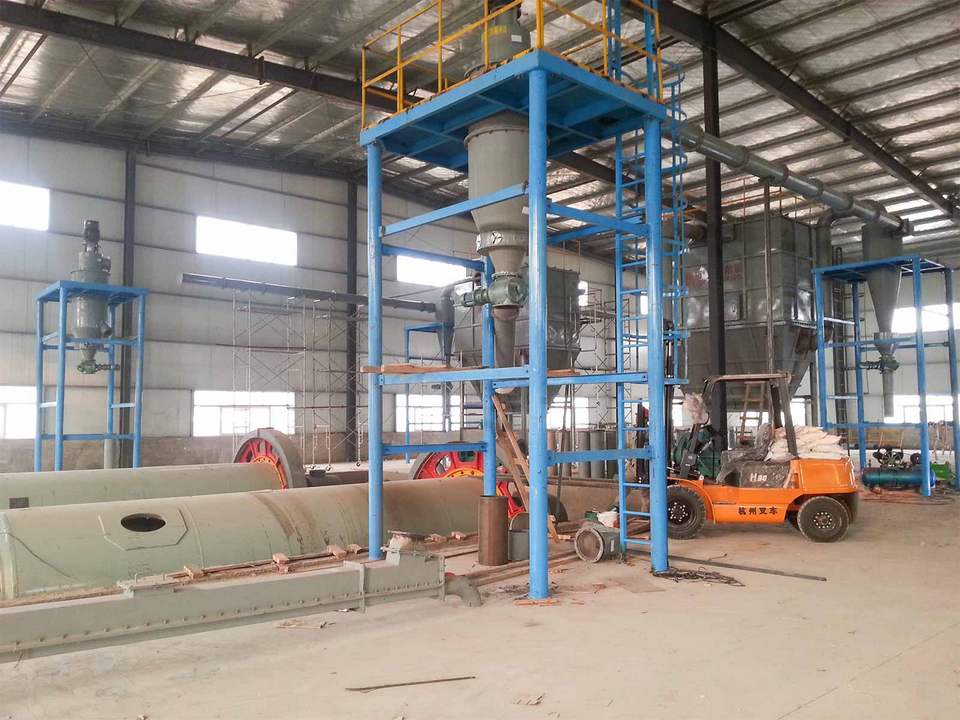
- Unreasonable design of ball mill
The ball mill can be divided into single compartment and double compartment. The length ratio of each compartment is different. In the case of single compartment, the length ratio of one compartment should be 30%-40%, and the length ratio of two compartments should be 60%~ 70%; In the case of double compartments, the length ratio of warehouse 1 and warehouse 2 is 25%~30%, and the length ratio of warehouse 3 is 45%~50% (the design ratio of each manufacturer's product may be different, the above data is only for refer to.)
If the design of the length ratio is unreasonable, it is very likely that the ratio of coarse and fine grinding of the ball mill will be unbalanced, which will cause the product to appear too thick or too fine, which will affect the output of the ball mill.
- Poor ventilation of ball mill
Under normal operation of the ball mill, due to repeated impact and friction of the medium in the cylinder, the temperature in the mill continues to rise, causing water vapor to be generated from the water-bearing material. If the ventilation effect of the ball mill is not good, the water vapor cannot be discharged in time, and the water vapor will adhere to the ball mill liner and steel balls, causing the ball or grinding phenomenon.
Solution: Control the ventilation of the ball mill, and the ball mill has a good passing effect, which can not only bring out qualified fine materials in time, but also effectively reduce the phenomenon of over-crushing and reduce the temperature of the ball mill.
- Unreasonable feeding of ball mill
During the operation of the ball mill, uniform feeding is a necessary condition to ensure the normal operation of the ball mill. If the feed is too little, the impact of the steel balls of the ball mill will increase, resulting in media waste; if the feed is too much, the grinding capacity of the ball mill will be insufficient, leading to saturation.
Solution: Need to strictly follow the feeding standard for feeding.
What should be paid attention to in the maintenance of superfine mill?
Enterprises want to improve production efficiency and reduce production costs. Effective maintenance of ultra-fine mills is a particularly important matter. So what should be paid attention to in the maintenance of specific ultra-fine mills?
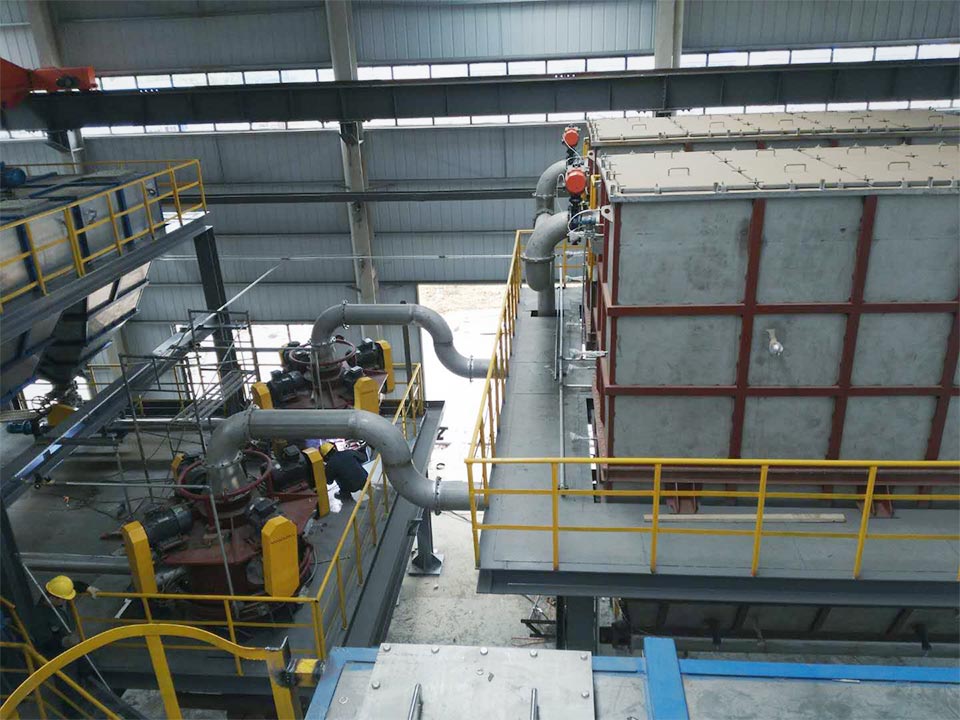
- What should be paid attention to in the maintenance of superfine mill?
(1) During the use of the ultrafine mill, a dedicated person should be responsible for establishing a post responsibility system and operating specifications. The operator must be familiar with the machine's performance, use requirements, and operating procedures. New recruits must undergo technical training and can only operate after meeting the requirements.
(2) The lubrication of the transmission parts in the accessories of the ultrafine mill must be done in place, and the lubricant should not be added too much or too little. The selection of lubricants in the summer season should be correct, and the cleaning of this part must be paid attention to. Impurities will contaminate the lubricant and affect its lubrication effect. According to the work intensity, clean it regularly and add new lubricants.
(3) Always check the back-blowing air pressure of the filter bag filter to avoid clogging of the filter bag. The decrease of the fan current will affect the output of the equipment. Usually, attention should be paid to the joints of the pipelines to be tightly sealed to ensure that there is no air leakage. Check the dust collector regularly. If the filter bag is damaged, it should be replaced in time to avoid dust leakage and pollution. The water drain switch at the bottom of the oil-water separator should drain water 2-4 times every 8 hours.
(4) Check all parts frequently, and fasten them in time if they are loose to avoid accidents. If it is found that wearing parts such as grinding rollers, grinding rings, mounting plates, and shaft pins are severely worn, the wearing parts should be replaced at the same time to ensure normal production. Clean the muffler regularly to avoid excessive resistance and affect the air volume of the system.
(5) The external working environment of the ultrafine mill should be taken to avoid outdoor production. Exposure to the sun and rain will cause varying degrees of damage to the mill. If water enters the machine, the effect will be even worse. The leaking surface of the mill also needs to be coated with anti-rust grease. If the rust is found, it should be dealt with immediately and anti-rust repair measures should be taken.
(6) The working hours of the mill should be planned in detail, and overwork should be avoided as much as possible. Overworked operation not only has low production efficiency, but also causes great damage to the machine, which is one of the reasons for shortening the service life.
- What are the advantages of superfine mills?
(1) The ultra-fine mill is a large-scale grinding equipment integrating grinding, grading and conveying. It has a vertical structure and a compact layout.
(2) The ultra-fine pulverizer starts from various angles such as grinding efficiency, wearing parts wear, maintenance and replacement parts, and achieves lower energy consumption, lower core parts wear and maintenance, and more convenient maintenance, saving customers' equipment operating costs.
(3) Repetitive grinding is reduced in the ultra-fine mill, and the particle size and chemical composition of the product are better controlled, which is convenient for stabilizing the product quality. At the same time, the grinding roller and the grinding disc are not in direct contact, and the iron content in the product is low, which effectively guarantees the whiteness and purity of the material.
(4) The ultra-fine mill runs stably with low vibration and low noise. Sealed and working under negative pressure, no dust spills. Equipped with an automatic control system to realize free switching between remote control and local control, easy to operate and save labor.
Application & preparation method of superfine silver powder
Silver is a chemical element and a transition metal. In nature, it mainly exists as silver compound ore. In industry, according to the particle size classification, silver powder can be divided into the following categories: fine silver powder, ultra-fine silver powder, ultra-fine silver powder, and nano-silver powder. According to the morphology of superfine silver powder, it can be divided into spherical silver powder and flake silver powder.
The physical properties of silver
| Physical properties | Numerical value | Physical properties | Numerical value |
| Chemical formula | Ag | Heat of vaporization | 150.58KJ/mol |
| Atomic number | 47 | Heat of fusion | 11.3KJ/mol |
| Crystal structure | Face Centered Cubic (fcc) | Specific heat capacity | 232KJ/(Kg·K) |
| Lattice constant a | 0.40362nm | Reflectivity | 0.91 |
| Relative atomic mass | 107.88 | Conductivity | 6.301x107S/m |
| Atomic radius | 0.144nm | Thermal conductivity | 429W/(m·K) |
| Outer electronic structure | 4d105s1 | Moh's hardness | 2.5 |
| Main oxidation state | +1,+2,+3 | Vickers hardness | 251MPa |
| First ionization energy | 7.567 eV | Brinell hardness | 24.SHB Mpa |
| Electronegativity | 1.93 | Expansion coefficient (25℃) | 18.9μm/(m-K) |
| Water soluble | Insoluble in water | Young's modulus | 83Gpa |
| Relative density (water = 1) | 10.49 | Shear modulus | 30Gpa |
| Melting point | 961.93 ℃ | Bulk modulus | 100Gpa |
| Boiling point | 222.12℃ | Poisson's ratio | 0.37 |
Silver also has good electrical conductivity and chemical stability. Due to the difference in morphology and particle size of ultrafine silver powder, the surface atomic arrangement of its crystal structure changes accordingly, resulting in a large number of surface defects, making the material unsaturated and chemically active, and possessing: small size effect, quantum effect, and macroscopic quantum Tunnel effect, surface effect.
As a conductive phase, silver powder is used in electronic pastes, and its properties will have a great impact on the performance of conductive pastes, especially the front silver paste of solar cells. Its application performance depends largely on the silver powder used. Nature.
The dispersibility of silver powder has an important influence on the printing and sintering of the front silver paste and the conductivity of the battery. The particle size of the silver powder will affect its tap density, thus affecting the compactness of the silver paste after sintering. The morphology of silver powder will affect its specific surface area. Particles with a large specific surface area have large surface free energy and are in an unstable state. They tend to shrink during sintering, thereby affecting the performance of the conductive paste.
Application of superfine silver powder
- Application in optics
The photosensitive paste prepared by mixing photosensitive resin with ultrafine silver powder as conductive function is printed on the master plate. After exposure and etching, the electrode pattern is continuous, the line width is uniform, and the edge is straight. It has been used as the electrode material of plasma display. In preparation.
- Application in the field of electromagnetic shielding
Ultra-fine silver powder has high conductivity. In the electromagnetic field, it can reflect the electromagnetic waves that are propagating back to the original space, thereby playing the role of electromagnetic shielding. At the same time, due to the high conductivity of ultra-fine silver powder, the magnetic permeability is relatively low. Therefore, the electromagnetic shielding effect of ultrafine silver powder is more suitable for high-frequency magnetic fields, but not for low-frequency magnetic fields whose main shielding effect is absorption loss.
- Application in the biomedical field
Ultrafine silver powder has the ability to kill bacteria, which is largely caused by the small size effect of Ag+ in the solution and nanometer ultrafine silver powder. The high chemical activity can destroy the cell membrane of the virus and make some groups on the virus DNA Loss of activity, inhibits the reproduction of the virus to achieve a sterilization effect.
- Application in the field of catalysis
For nano-silver, the essence of its catalytic process is the chemical adsorption and desorption of oxygen by silver, which can be widely used in the field of drugs and chemicals for the epoxidation of olefins, and the field of supported silver catalysts for the selective oxidation of alcohols. The field of catalysts for reducing the NOX emitted from automobile exhaust to generate nitrogen; the field of fuel cells for selective oxidation of carbon monoxide and environmental pollution treatment fields.
- Application in the field of photovoltaic power generation
The cathode material of solar cells is usually composed of conductive silver paste prepared from micron-sized spherical silver powder. The conductive silver paste is screen-printed and attached to the solar crystalline silicon wafer to form a grid (anode) through high-humidity sintering, which can convert light energy into Electrical energy.
- Applications in the microelectronics industry
Because of its high electrical conductivity and excellent heat transfer, ultrafine silver powder has been widely used in the field of microelectronics industry, such as used as conductive connection and transmission media and various electronic pastes, etc., for the development of a new generation High-performance electronic components. Utilizing the quantum properties of silver nanowires, it can be used as a connecting wire for nanoscale devices, so as to meet the requirements of the connecting wire for large specific surface area, small diameter, and uniform orientation.
- Applications in other fields
Because of its excellent thermal and electrical conductivity, ultra-fine silver powder is used in automotive rear windshield defrosting heating resistance wires, etc.; nano-silver powder can promote cell repair and is often used in the field of rehabilitation after medical operations.
Preparation method of superfine silver powder
The preparation methods of ultra-fine silver powder can be divided into physical preparation methods and chemical preparation methods. The physical methods include mechanical ball milling, evaporation and condensation, DC arc plasma, laser ablation, and atomization. Chemical methods include sonochemical method, electrolysis method, liquid phase chemical reduction method, spray thermal decomposition method, and liquid phase precipitation conversion method.
Advantages and disadvantages of different physical methods to produce ultra-fine silver powder
| Physical preparation method | Advantages | Disadvantages |
| Mechanical ball milling | Simple process, low cost, suitable for large-scale production | Wide particle size distribution, uneven performance, low efficiency |
| Evaporative condensation method | Silver powder has high purity, uniform particle size and good crystallinity | High equipment requirements, difficult for industrial production |
| Laser ablation | The process is simple, the purity of silver powder is high, and the stability is good | High cost |
| Atomization | Silver powder has high purity and good crystallinity | Limited by equipment, only micron-level silver powder can be produced |
| DC arc plasma method | High purity of silver powder, high purity of silver powder | Wide particle size distribution, high requirements for equipment, high investment |
Advantages and disadvantages of different chemical methods for preparing ultrafine silver powder
| Chemical preparation method | Advantages | Disadvantages |
| Liquid phase chemical reduction | The process is simple, the price of raw materials is low, the energy consumption is small, the parameters are easy to control, and it is suitable for large-scale production | Difficulty in process improvement |
| Spray pyrolysis | Simple process, high production efficiency, environmentally friendly | Wide particle size distribution |
| Electrolysis | The process equipment is simple, the purity of silver powder is high, and the requirement for the silver content of the raw material is low | Process energy consumption is high, production cost is high |
| Microemulsion method | Silver powder has good dispersibility and particle size can be precisely controlled | Difficulty in solid-liquid separation |
Because the liquid-phase chemical reduction method has the advantages of simple process, low raw material price, low energy consumption, easy control of parameters, and suitable for large-scale production, the current industrial ultrafine silver powder is mainly prepared by the liquid-phase chemical reduction method.
In the preparation process of ultrafine silver powder by liquid-phase chemical reduction method, the main factors affecting the performance of ultrafine silver powder are the concentration of reactants, the type of reducing agent, the reaction temperature, the type of dispersant, and the pH value of the reaction system.
As the application of silver powder in solar energy, Internet of Things and other industries continues to increase, the position and role of silver powder as a supporting material for strategic emerging industries will continue to increase, and the consumption prospects are broad.
Article source: China Powder Network


